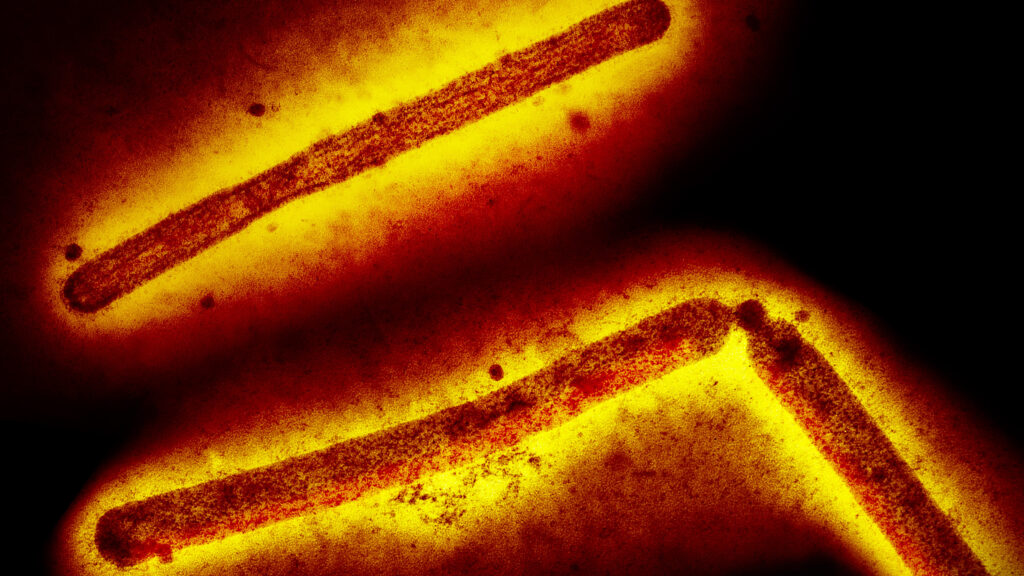timeAn outbreak of H5N1 avian influenza in U.S. dairy cows may have lasted several months longer than previously realized and may have spread more widely across the country than confirmed outbreaks suggest, according to an analysis of genetic sequences. The Department of Agriculture released it on Sunday.
Michael Worobey, an evolutionary virologist at the University of Arizona, told STAT on Tuesday that genetic data suggests a spillover event may have occurred in late 2023.
The bad news is that the phenomenon appears to be deeply ingrained and has been present in cattle for a long time, and may be very, very, very common, said Worobey, who conducted the analysis with a number of scientists in the United States and Europe.
He suggested that the outbreak needs to be taken more seriously than it is now, especially given the amount of contact humans have with cattle. We need to look at it from the ground up and see if we can close the gap between what’s going on and what we know.
Although there were reports as early as February that dairy cows in Texas were infected with a mysterious disease, the USDA first confirmed an outbreak of the H5N1 virus in the state’s dairy cows in late March. Since then, the number of confirmed outbreaks in eight states has climbed to 33 cattle herds. A farm worker suffering from conjunctivitis has been confirmed to be infected.
The USDA does not yet know if these outbreaks are all linked to the movement of cattle, farm equipment or workers, or if there are multiple spillover events where infected wild birds are transmitting the virus to dairy cows. Last week, it told STAT it could find links between infected herds in Texas, Kansas and New Mexico; the first dairy cows detected with infection in Michigan were imported from Texas. But the USDA failed to distinguish those outbreaks from others in Idaho, Ohio, North Carolina and South Dakota.
Worobey said the genetic sequences were clustered so tightly that this could only be a single spillover. If it jumped from bird to cow over and over again, I don’t think you’d get the same very reduced genetic diversity where every internal segment shows the same pattern.
For those concerned about the dangerous H5N1 virus, the prospect that the outbreak could be months longer than previously known is not reassuring.
If this is true, it’s been “embarrassingly frustrating” that it’s been flying under the radar for such a long time, Worobey said. We don’t know the extent of asymptomatic spread and how widespread it is. And trying to deal with something long after the horse bolted.
Tom Peacock, an influenza virologist at the Pirbright Institute, a British organization focused on controlling viral diseases in animals, agreed with Worobey’s interpretation of the data.
The USDA previously reported that it believed the virus from an infected cattle herd had entered a chicken farm near Michigan. Genetic sequences released by the U.S. Department of Agriculture from dairy cows, poultry and other infected species show that hypothesis is correct, Peacock said. If you look at all the cow sequences together, they all cluster together, as do cats, chickens, wrens, and things like that.
What is inconsistent with this scenario, he said, is the human condition.
He said the genetic sequence of the human case, which occurred on an unidentified farm in Texas, was sufficiently different from that of cattle to be easily linked to them. These differences suggest that the individual was either infected in a separate event, possibly not by cattle but through contact with infected wild birds, or that another lineage of the virus may have been present in cattle early on but later became extinct.
It’s essentially a distant relative that can’t be directly linked to this outbreak, which either means it was a second spillover or an early divergence in the cattle sequence, Peacock said.
The 239 genetic sequences shared by the USDA on Sunday did not include so-called metadata information, which is where the sample that generated the sequence was collected, what part of the infected animal’s body the sample was collected from, or the specific time it was collected. They simply stated “USA” and “2024,” which limited how well outside scientists could explain the phenomena they were seeing.
Peacock said it would be helpful to know whether any of the cattle sequences were generated from samples taken from a farm where infected workers are thought to have been exposed to the virus. But this information is not available.
Asked whether the genetic data analysis had increased his understanding of the risk H5N1 poses to humans, Worobey said he was disturbed by the news that H5N1 appears to be spreading in mammals, calling it unprecedented.
Carrying the virus in a mammalian species that people come into regular contact with gives H5N1 a greater chance of acquiring the mutations it needs to evolve to infect humans, or a better chance of taking a shot, Worobey said. That’s bad.
#Genetic #analysis #shows #H5N1 #influenza #virus #outbreak #dairy #cows #occurred #earlier #thought
Image Source : www.statnews.com
